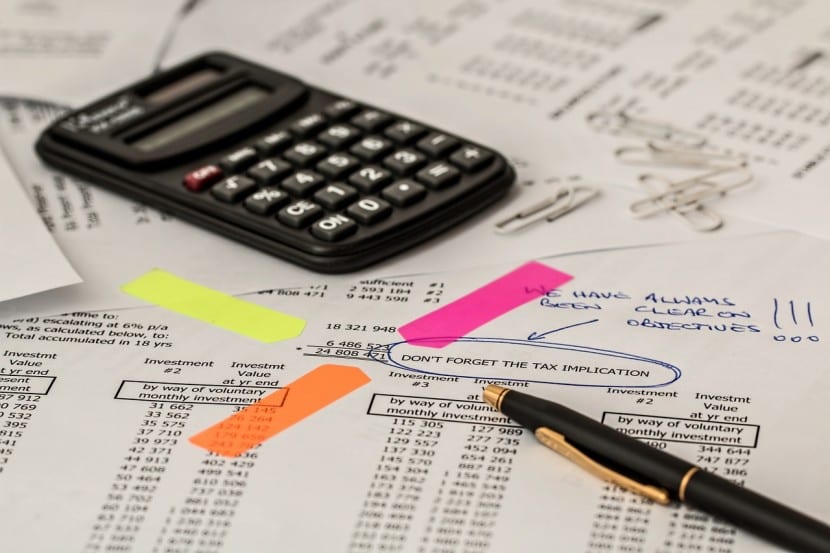
The unexpected depreciation of equity markets is leading many small investors to vary their equity portfolios. Promoting, as a strategy to provide them with greater security, a greater specific weight of the securities that distribute dividends among their shareholders. Being the Ibex-35 one of the indices where this distribution of benefits is most lavish. Offer an annual return of between 2% and 8%, depending on the payment of each company.
On this aspect, it should be remembered that Spanish listed companies will distribute some 27.000 million euros in dividends this year, according to the estimates made by the Spanish fund manager Gesconsult. And where it recommends, in the current bearish context of the stock markets, that the savings be invested in securities that pay the dividend in cash, and not reinvest it in shares.
From this scenario that presents this class of values, the strategy of savers should be focused on promoting the liquidity of their checking accounts. And one of the most effective ways is channeled through the dividend. But do we really know what this payment consists of? Well, it is the proportional part of profits that are distributed among the shareholders of the company. And what you can benefit from if you are one of them.
Not all listed companies make a profit in their business activity, far from it, and only a select group of values of the national benchmark index show this strength in their respective businesses. As a consequence, they are in charge of distributing it among investors regularly every year, and based on the profits generated in their business accounts.
They tend to coincide with the most powerful companies in the national economy that are listed on the stock markets. Usually from the banking, electricity, oil and telecommunications sectors. But their pay policy is not always the same. Providing, in any case, an extensive offer that you can take advantage of to build your investment portfolio in the coming months from this very particular strategy.
How is the distribution of dividends carried out?

It is not always done in the same way, but varies depending on the strategy chosen by the companies. The most common way is to pay it in cash, in such a way that the shareholders receive it in their account within the periods set up to channel the charges. In this way, the beneficiaries will be able to have additional income in their income statement. Helping them plan their household budgets more optimally.
However, there is another modality that is increasingly being imposed more aggressively in the Spanish stock market panorama. Its about flexible dividend, although you may know it by its English name (script dividend). It is a recently implemented format that allows investors to choose between receiving money in cash, or on the contrary, through shares.
If you opt for this last option, the most immediate effect is that it will not affect the money you have available in your checking account. But in return, you will boost your investment even more, with a greater number of company shares. With the real possibility of increasing your assets if prices rise in the markets.
You should choose it based on your real needs, but above all depending on the trend shown by the selected value at that time. As a consequence, if the listed company shows a notable upward push, perhaps it is more profitable to reinvest it with more shares. Not in vain, they can be revalued and you will have time to sell them to stay permanently with the capital gains generated.
On the contrary, if the company is immersed in a bearish process of great consistency, it will not be very prudent to opt for the new shares, since you will lose money in the operation. And the most sensible thing will be that you make cash through the payment in cash. Anyway, it will be a very personal decision that will only depend on you, and not on other factors.
How many dividends are distributed per year?
There are still some investors, especially the less experienced, who are in the false belief that it is done through a one-time deal per year. Nothing is further from reality. Because in effect, it can only be one payment in each fiscal year, but other forms of distribution are enabled. They range from semi-annual season tickets, the most common among the members of the IBEX 35, up to quarterly. This last modality is the one chosen by the majority of Spanish banks, which make four payments a year.
Depending on this variable, it may even be the case that you choose the values based on the regularity of the payments made, and that will help you better face the expenses of each month, or even of the whole year. And of course, as is logical on the other hand, as you have more shares, your payments through dividends will be more generous.
Not in vain, you will have to multiply the dividend amount by the number of shares you have in your investment portfolio. The result of this simple operation is the one that will go to your account or savings book, on the same day that the payments are made.
Fixed income within the variable
Opting for securities with dividends is a very common strategy among the most conservative savers, with a very long period of permanence, generally from three years. They are forming a remuneration system every year, by which you will be ensuring a fixed performance and assured all exercises. Certainly above 3%, which will significantly improve the profitability generated from the main fixed income banking products (deposits, promissory notes, public debt, bonds, etc.).
These latest designs operate under really modest margins, and completely unsatisfactory for the interests of Spanish savers. Between 0,20% and 1%, as a consequence of the recent decision of the European Central Bank (ECB) to lower the price of money, and that has resulted in a radical drop in European interest rates, which are practically zero. As a measure to boost the reactivation of the euro zone economy.
Given this monetary scenario, it is not surprising that many people, as it may be in your case, have opted for this savings model to monetize your personal assets. Beyond how the equity markets may evolve in the coming months. What's more, you can lose money on your investments, but at the same time giving yourself a guaranteed return every year, and regardless of how the shares are priced on the stock markets.
How much do listed companies pay?
The Spanish continuous market is one of the most active to distribute this remuneration among shareholders. With an offer that really satisfies their wishes to get more liquidity. And that involve almost all market sectors, with highly suggestive proposals for all user profiles. From the most conservative to the most aggressive, and through which you can conform a safer savings bag for years to come.
In fact, the Spanish stock market has become a source of companies that give dividends. And above that generated by other international stock markets, since they offer an average return that is close to the 5% barrier. Although if you want to exceed these profit margins, you will have no problem achieving it, even almost doubling this performance. Some of them even approach a double-digit distribution.
If you want to achieve higher profitability, you will have no choice but to buy the shares of companies such as Repsol, Telefónica, Endesa, Mapfre, Sacyr, Abertis, Enagás, Acerinox and Gas Natural. They are the ones that head the list of listed companies that currently offer the best dividend yield, with percentages ranging between 5% and 9%. Some distribute them through a single single payment, while others make the operation effective in several annual charges.
It is precisely the periods corresponding to summer and winter where these payments are formalized, some of them in installments. And that in all cases, are announced by the affected companies with some advance notice, so that you can plan your investment portfolio more efficiently.
As an alternative, also by leaving the domestic market you can obtain these amounts, although under much more modest margins. And where the electricity sector is constituted - as it happens in the national panorama - in the main source of these regular payments.
Tax treatment of dividends

Another of the relevant aspects to opt for the payment of dividends is based on their tax treatment, and that it is convenient for you to know, to see if it is convenient for you to use this management strategy. First, you will collect this payment in net. What does it mean? Well, very simple, that you will receive it in your checking account once the amount of the withholding on account of the Personal Income Tax (IRPF) has been deducted.
Thus, it will not be the amount announced by the company, but will be somewhat lower as a result of the application of tax discounts. Not surprisingly, it is common for less experienced small investors to think that there has been a confusion, or simply an error in the transfer of the amounts derived from this remuneration that you receive as a shareholder. But you will check that everything is correct, and what they do to you is deduct your taxes.
Dividends yes, but the main thing is to get a return on the prices.